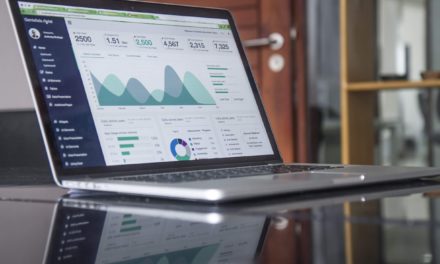After lunch, you’re just settling in behind your laptop. You decide to check for any recent conversions in Pardot. You see a name, Victor Hugo, and the time a download took place, 12:30 p.m. You let out a “Booya” in celebration. After all that hard work: writing an eBook, setting up a landing page, and running sponsored posts, someone actually submitted your form. Yes, you’ve won. But, what happens next?
Pardot Engagement Studio allows you to build automated email workflows that can be an effective follow-up to the scenario above. An email nurture series builds on that hard work, gently nudging your leads through the full buyer journey.
When beginning an inbound campaign, I like to start by defining a common problem shared by my audience. This can be a challenge, but taking the time to identify a real-world problem will help you create more relevant content.
Protip: There’s so much you can do with Engagement Studio: client onboarding and offboarding, internal communications, webinar enrollment and follow ups, and more. A nurture series is just one use case of so, so many.
Step 1: Meeting your audience where they’re at
Eight hours had passed since my bedside lamp unexpectedly went out and the fridge ceased its usual humming. The rain had stopped and the storm clouds had long since cleared, giving way to a pleasant morning. And I searched the internet, wondering how long my food could last before spoiling in the quickly-warming fridge. My search led me to a food blogger website, and I dove right in. Now, I’m one of their leads!
What burning questions would prompt your target audience to grab their phone in the middle of their morning cereal in search of a solution? What do your current clients often ask about? Where do you have expertise and credibility? These questions will help you find the right topics for your audience.
Step 2: Creating stellar content
When crafting a content piece, you should return to that problem identified in step one. I often begin by restating the problem, helping communicate to the reader that I really hear them.
Once your problem is defined and you know how you want to answer it, the next important consideration is the type of content to produce. Which formats suit your audience? Does a graphical eBook or a more serious white paper work well? Or, have webinars gained a strong response in the past?
Once your content asset is ready, you can set up a form and landing page. This is typically referred to as “gating” your content (meaning, your visitor has to trade their email address in exchange for your awesome knowledge). Your asset can be delivered via an autoresponder email or through a download link on the form’s thank you message (or both).
You can also post on your blog or on a landing page without gating it behind a form. In this case, your call to action could be to fill out a blog subscription or a newsletter sign-up.
Step 3: Creating your email templates
Your goal when building a nurture program should be to keep the conversation going. I like to provide more resources that relate to the initial content offer theme. I might also plug relevant products or services as my leads move further along in the program.
Note that I said, “further along in the program”. Bear in mind that coming on too strong can be a challenge. Don’t try to propose on the first date. It can be a delicate balance to try to gauge your audience’s interest and keep them engaging without selling too soon.
Before creating the program in Pardot Engagement Studio, you can start by creating your Email Templates. If you have an existing template with your logo and branding, you can clone that and plug in your new content, repeating this process for each email in the workflow. Creating your templates before building the program will let you easily add them while working in the editor.
Step 4: Configuring your recipient list and enrollment
Next, you’ll create your recipient list. To associate the list with your form through the form’s Completion Actions, you will want to create a static list. Once you’ve created the list, you can include it in the Completion Actions on your download form. This will automatically add folks to the list once they submit.
Protip: Requesting an opt-in on your form: Asking your audience to explicitly opt-in to receive marketing emails can result in stronger engagement while also maintaining compliance with recent privacy regulations.
Step 5: Putting together your Pardot Engagement Studio program
With your emails and your list ready, the next step is to create your Engagement Studio program. This is when you plan the exact order that your emails will be delivered. With each email, you can specify a wait time between sends or other actions. I often allow about a week between emails, but that will vary depending on the content, offer and your own database.
Decide on reporting structure
For reporting, you can add steps after each email to assign Prospects to a Salesforce Campaign. This allows you to attribute Leads and Opportunities to each individual email. And who doesn’t love attribution?
But, let’s just say you don’t. Another approach is to use one Campaign for the entire program. This works well if you just want to see the number of conversions and Opportunities generated by the series as a whole. After creating your Campaign in Salesforce, you could add a step to the beginning of your Engagement Studio flow, assigning your recipients to the Campaign.
In this case, you will likely focus on conversions when analyzing performance. This email series nurtures leads who are at an early stage. Just converting those folks into qualified contacts indicates success. (Job well done!) If, for example, you created an Engagement Studio program focused on reengaging past customers, you could look to Opportunity attribution for determining success.
Define your sales handoff
An important step when building your program is defining the hand-off to the sales team. One option is to include a CTA (possibly near the end) prompting folks to engage with someone in sales (e.g. offering a demo, a strategy session or an advising/consulting call). If your audience takes advantage of the offer, they can be automatically assigned to a team member in sales through Engagement Studio.
You can also assign Prospects once they reach a certain lead score. Near the end of the program, you can add a Rule checking to see if the lead’s score exceeds a set number that you determine. You could then configure an Action to assign these high-scoring individuals to a colleague in sales.
Protip: Removing recipients from your program: It may make sense to remove individuals from your program once they’re assigned to sales. After assigning Prospects to sales, you can include an End step, closing out the email series for this group.
Step 6: Sharing your amazing content
With your content ready to go and your follow-up email series in place, it’s time to promote it! Pardot’s social connectors make it easy to promote your piece across multiple social media channels. Sponsored posts and search ads can also be effective. (Note that paid ads are run outside of Pardot. There isn’t a special integration centralizing those campaigns in Pardot. Bummer.)
As leads submit your form (fingers crossed) and progress through the nurture series, you can monitor open and click-through rates, making improvements based on this feedback. Maybe a different subject line or content offer in the first email could boost engagement? Perhaps a smiley emoji is the key?
As people come in from various channels, your Pardot Engagement Studio series will help deepen the conversation and nurture leads through your marketing funnel. Keep providing more resources and information to build trust and generate interest until that right moment comes to bring in the sales team!











